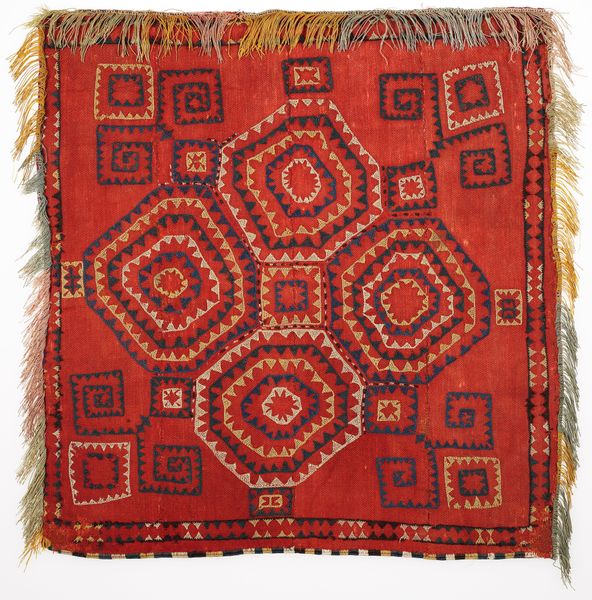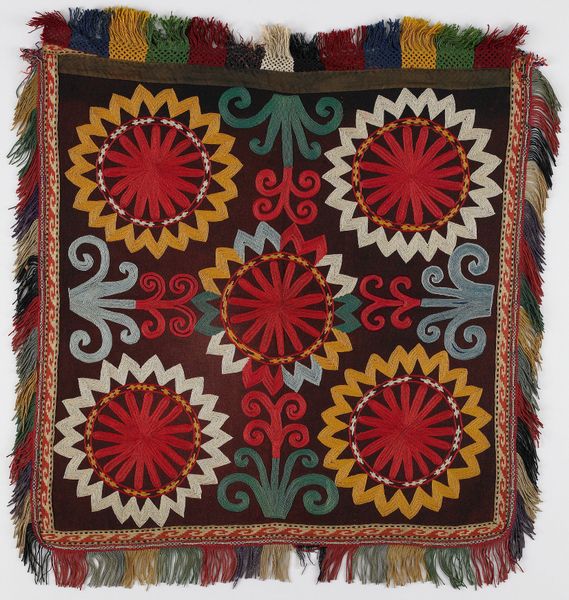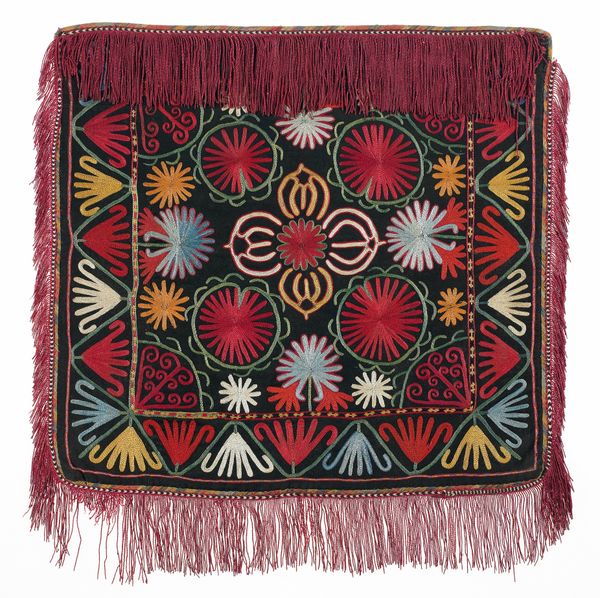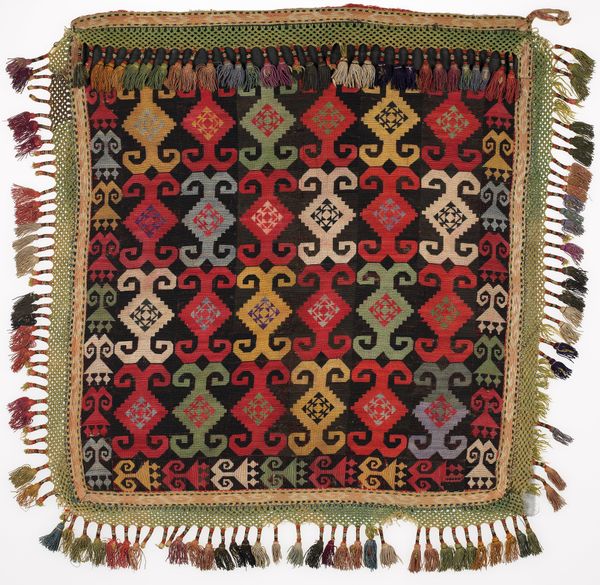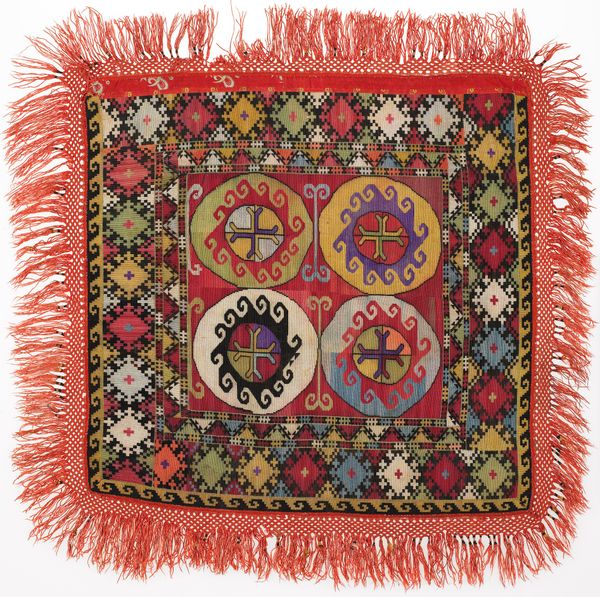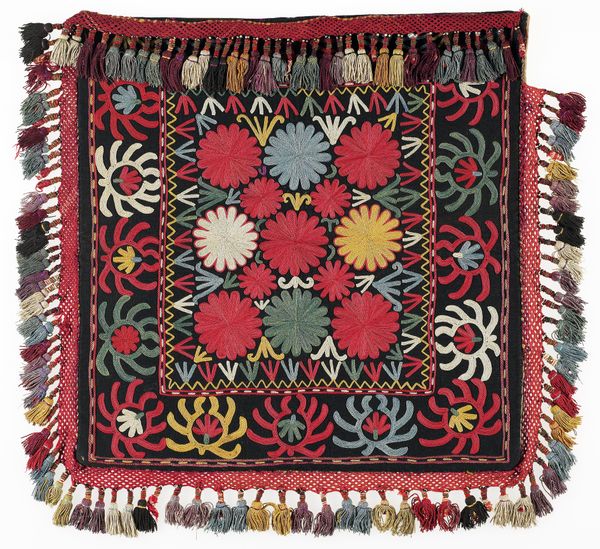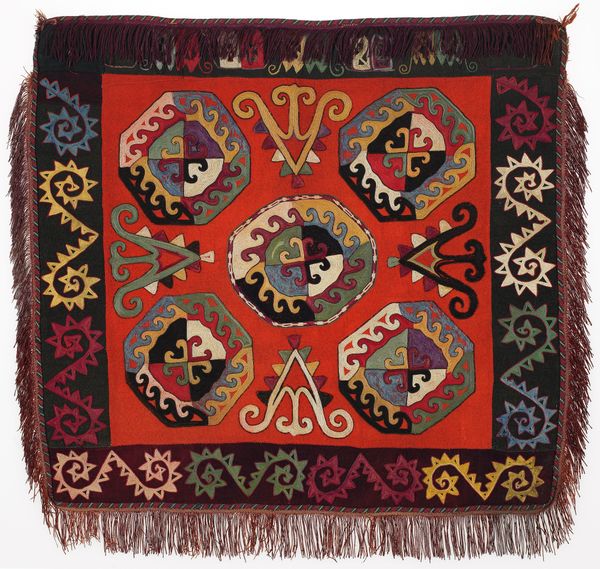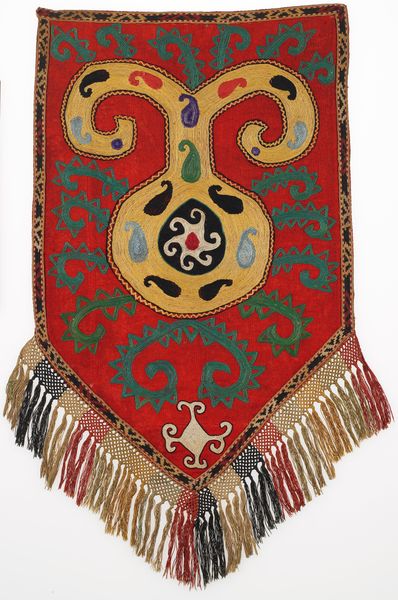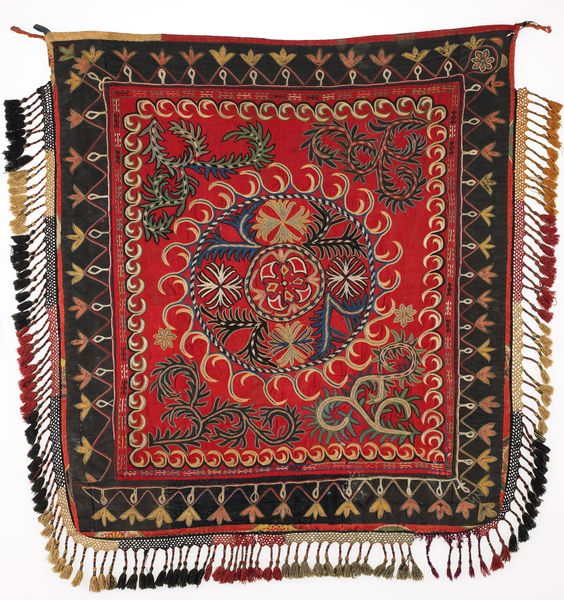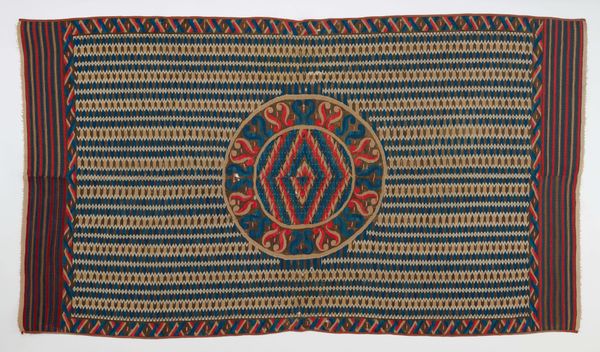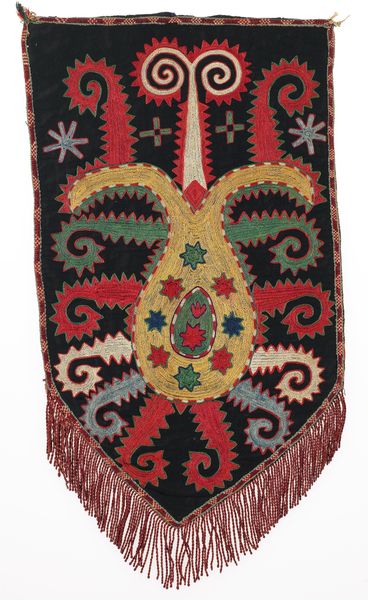
fibre-art, silk, textile
#
pattern heavy
#
natural stone pattern
#
fibre-art
#
silk
#
textile
#
fashion and textile design
#
geometric pattern
#
hand-embroidered
#
pattern design
#
geometric
#
repetition of pattern
#
pattern repetition
#
islamic-art
#
textile design
#
layered pattern
Dimensions: 28 x 30 in. (71.12 x 76.2 cm)
Copyright: Public Domain
Curator: This textile work, known as "Ilgich," comes to us from around the 19th century. It’s a fascinating example of textile art using silk and wool. You can find it here at the Minneapolis Institute of Art. Editor: My first thought? The intense geometry and vibrant color palette make it jump right out. It almost pulsates with energy against the dark background. Curator: Absolutely. The piece immediately brings to mind Central Asian traditions and how women's labor has historically been relegated to this particular craft in ways that mirrored, and even rebelled, against their sociopolitical positioning. Editor: Look at the way these motifs repeat and echo throughout. Each star, triangle, or flower-like figure probably carries its own cultural significance. The artist or artisan is using a shared visual language. I’m especially interested in the tension between the sharp geometric patterns and the soft, organic nature of the wool. Curator: Precisely, and that tension you're pointing out speaks to the broader social forces. The structure, the repeating patterns… these could be read as symbolic of community, lineage, of cultural expectations. But then, within those frameworks, we see individualized choices of color, minute deviations from pattern, evidence of human agency. Editor: Do you think that's intentional or more of an artifact of the handcrafted process? Curator: It’s difficult to say with certainty, of course, but the consistent, yet personalized approach suggests a conscious effort to negotiate cultural and personal expression. The Ilgich serves as material culture that is deeply entangled with the stories and identities of its creators and users. Editor: And consider the fringed edges, that border of carefully arranged blocks, all acting to frame this visual story. Each one acts almost like a miniature symbol of its own. Curator: This piece demands that we engage with the broader historical and contemporary social issues related to identity, gender, and labor within the region, it speaks of how meaning and tradition are actively constructed, deconstructed, and reconstructed. Editor: Looking closely, it’s stunning how this single item speaks to complex layers of culture. It almost functions as a mnemonic device, designed to trigger recognition and contemplation across generations. Curator: I completely agree. There’s a potent dialogue at play, a historical grounding and urgent voice calling us to unpack this culture and the complicated space where visual tradition and personhood meet.
Comments
No comments
Be the first to comment and join the conversation on the ultimate creative platform.
